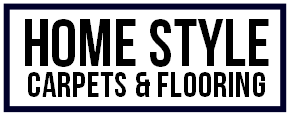What is the best way to clean a synthetic lawn?
/By design, artificial grass is manufactured to last for many years. Able to withstand a wide range of weathers and wear and tear, synthetic lawns also require less maintenance than real lawns, making them a sought-after solution for many homeowners.
Although synthetic grass is less labour-intensive than the real deal, to ensure it remains in perfect condition during its lifespan, it’s important to take care of it correctly. Like any installation you make on your property, you’ll want to get the most out of the investment.
The best way to clean an artificial lawn will depend on the type of mess you’re trying to tackle, and in the following sections, we’ll explore the ideal approaches for different kinds of debris.
Clearing away general debris
Fitted outside, your artificial grass is bound to encounter dirt, dust, fallen leaves and even windblown rubbish. Although this type of small debris won’t cause harm to your synthetic grass, it can spoil the appearance of it, and removing it from the surface will enhance the appearance of your lawn, making it look greener and cleaner.
The good news is that all of this unwanted material can be easily removed using either a stiff-bristle broom or a flexible rake designed for lawns. It’s a wise move to avoid brushes that have steel bristles, as they can pull on your artificial grass, inflicting damage.
Dealing with weather-related issues
Artificial grass is renowned for being an all-weather option, and it can cope with extreme weather, such as ice and snow, but it’s a sensible move to keep it clean over winter. Snowfall should always be left where it lies and allowed to drain away naturally from your lawn, just as rain would. If it’s absolutely essential that you remove the snow, then you must be exceptionally careful, as using a sharp-edged tool like a shovel can lead to causing irreparable damage to your grass. Stick to a stiff-bristle broom for clearing any snow.
Cleaning up spills
If you’re entertaining guests at a garden party on your lawn, spilled food and drinks are a given. Luckily, artificial grass is incredibly easy to clean with a simple sponge or cloth and some water. Never use strong chemicals or bleach, as this can discolour the fibres of your lawn.
Washing off pet waste
Finally, if you have cats or dogs, the chance of an accident occurring on your lawn at one time or another is likely. Unlike natural grass, synthetic lawns won’t yellow when this happens, but they will need immediate attention to ensure they aren’t harmed. Quickly scoop up any solid matter and dispose of it safely before tackling the affected area. Again, a sponge or cloth and some water will be adequate to remove any mess, but you can use some mild dish soap or detergent for any stubborn stains remaining and to avoid unwanted odours.
Artificial grass offers homeowners an easy-care option, but regularly cleaning your lawn and using the right tools and methods is crucial to ensure it stays in top condition.

